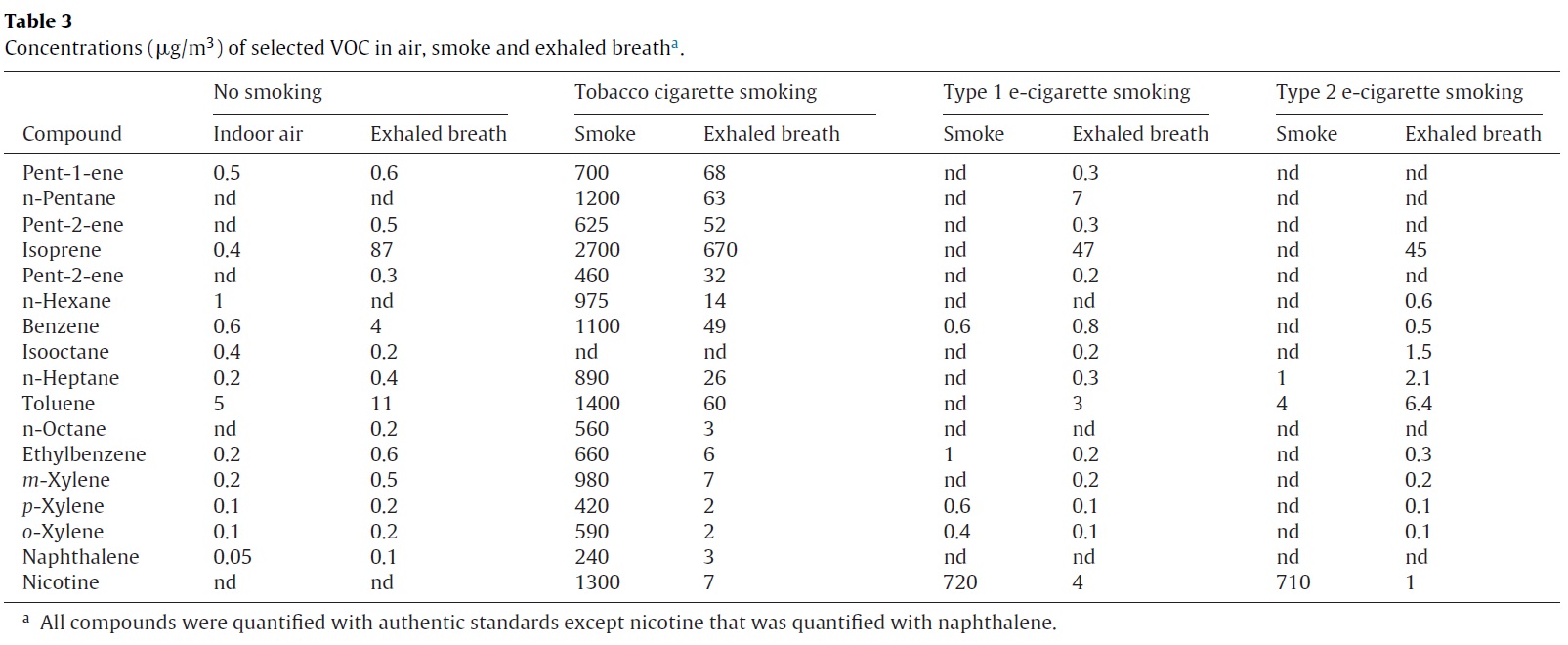New study proves there is no second-hand vaping: e-cigarette aerosol contains less volatile compounds than normal exhaled breath
- Monday, 07 September 2015 21:09
By Dr Farsalinos
A new study was published today in Journal of Chromatography A. The study was performed by the Spanish Council of Scientific Research. They measured the levels of several volatile organic compounds (VOC, they measured 156 compounds) in indoor air, normal exhaled breath, smoke of tobacco cigarettes, exhaled breath of smokers after taking cigarette puffs, e-cigarette aerosol and exhaled breath of vapers after taking e-cigarette puffs.
First, let me clarify that VOCs are a large group of compounds, some (but not all) of which are toxic. The study has some methodological problems. In the Sampling section, they mention: “People inspired and expired deeply three times, then retained the breath for 20 s and blew into the Bio-VOC body through a disposable cardboard mouthpiece at their highest capacity”. Obviously, smokers or vapers do not hold their breath for 20 seconds before exhaling the breath. Thus, the study probably overestimated the absorption rate of VOCs present in cigarette smoke or e-cigarette aerosol. However, still the information is valuable because they also measured the smoke and e-cigarette content.
The results of the study basically showed that indoor air and normal exhaled breath contains more VOCs that the e-cigarette aerosol! I calculated 17 and 25 VOCs in the 2 e-cigarettes tested, 36 VOCs in indoor air and 42 in normal (non-smoking, non-vaping) exhaled breath. Tobacco cigarette smoke contained 86 VOCs, and exhaled breath after smoking similarly contained a large number of VOCs. As I said, not all VOCs are toxic but, interestingly, there were cases of toxic compounds present in the exhaled breath but not in the e-cigarette aerosol. For example, isoprene, which is listed as a carcinogenic compound in California Proposition 65 (I hope the CEH is reading this comment), is present ONLY in exhaled breath (even in normal exhaled breath), but not in e-cigarette aerosol.
The study did find nicotine in the exhaled breath after taking e-cigarette puffs, which is expected and compatible with findings from other studies. I have already presented in a previous comment that the amount of nicotine in the environment is so low that it does not have any effect (not even a biological effect, let alone an adverse effect) on those environmentally-exposed.
The study adds to a previous publication finding no carbonyls (aldehydes) exhaled after taking e-cigarette puffs. Moreover, it shows the absence of several toxic compounds not only in exhaled breath but also in the aerosol, which is relevant to the safety of e-cigarettes compared to the huge emissions in tobacco cigarette smoke. Below is a table from the study, showing selected VOCs (nd = not detected).






